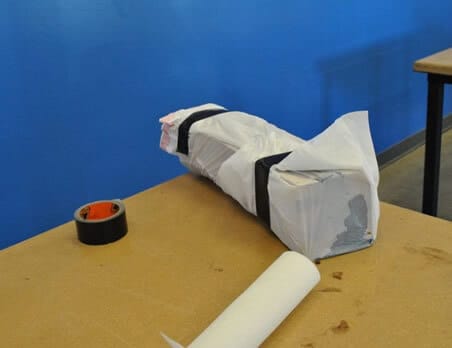- James Donaldson’s Newsletter
- Posts
- How To Repair Split Wood 'The Smarter' Way
How To Repair Split Wood 'The Smarter' Way
New Post From James Donaldson
How To Repair Split Wood 'The Smarter' Way
Today, I'm going to show you how to repair split wood (and make it look good!)

In an otherwise attractive piece of wood, an unsightly split or crack can run deep like family turmoil. Most wood fillers are intended to be little more than aesthetic solutions.
Even the hardiest fillers are intended to withstand compressive forces but not sheer stress.
Here I will demonstrate my solution for when I don't want to give-up on a piece of wood.
This block was salvaged from a eucalyptus tree that fell on my house (don't worry, I'm fine). I want to be able to work on it without risk of further splittage.
STEP 1: SUPPLIES

I have found polyester resin to the be ideal for this kind of repair.
It is very strong in its cured state, it seeps into fibers and produces a strong bond (its intended use is laminating wood and resining fiberglass) and it is slightly flexible, so it will move with wood as it bends and expands with humidity.
STEP 2: PREP

I prefer jet black for most wood repair work. I have given-up trying to match wood colors when disguising a crack.
Specialized pigments are available for resin, though I have found almost any black coloring works. Here I am using black airbrush paint. A little bit of it goes a long way.
Tape-up the sides and bottom of the piece to keep the resin inside. Cracks run deep, so it is sometimes wise to tape the entire piece inside a plastic bag.
Do the repair work before making any cuts or planing on the wood and don't worry about the resin puddling on the outside.
We scour 100+ sources daily
Read by CEOs, scientists, business owners and more
3.5 million subscribers
STEP 3: POUR

Pour it in the cracks until it overflows.
STEP 4: USE THE BAG

Just to keep everything within the confines of the wood, I taped a bag around it.
STEP 5: UNVEILING

You got resin everywhere. It's a good thing we used the plastic bag.
STEP 6: FINISHED

Polyester resin can be worked with most woodworking tools.
Be careful if you choose to go at it with a chisel, the excess resin will throw off glass-like shards when impacted.
A bandsaw will cut easily and safely, then the resin can be planed, routed, or sanded. This is a structural repair, so the block is now fit for any purpose as a solid piece.
P.S. If you like this newsletter, check out the tool I’m using. It’s called Beehiiv and you can try it completely free of charge for 30 days and get 20% off for 3 months! Check it for yourself here: https://www.beehiiv.com?via=James-Donaldson
To simpler woodworking,
-James Donaldson

